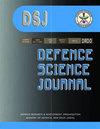Optimal Step Size Technique for Frequency Domain and Partition Block Adaptive Filters for PEM based Acoustic Feedback Cancellation
IF 0.8
4区 工程技术
Q3 MULTIDISCIPLINARY SCIENCES
引用次数: 1
Abstract
The adaptive filtering approach has been commonly used to perform acoustic feedback cancellation (AFC) in digital hearing-aids due to its reliable performance and feasibility. Because the loudspeaker and microphone are close together in hearing aids, the corresponding signals are highly correlated, resulting in biased estimation if adaptive filters are used. This problem can be addressed with the help of the decorrelation prefilter by incorporating the Prediction Error Method (PEM) technique into AFC. Frequency-Domain Adaptive Filters (FDAF) are preferable over the time-domain implementation to achieve better performance in terms of convergence and computational complexity. In addition, Partition-Block Frequency-Domain Adaptive Filters (PBFDAF) offers low processing delay. However, because of their fixed step-size, there is a trade-off between initial convergence and steady-state misalignment in the widely used frequency-domain algorithms. While Variable Step-Size (VSS) algorithms can help with this issue, VSS techniques for frequency-domain algorithms have not been extensively studied in the context of PEM-AFC. Hence, in this paper, we presented an Optimal Step-Size (OSS) technique for both the FDAF-PEM_AFC and PBFDAF-PEM_AFC algorithms to simultaneously accomplish fast convergence and minimal steady-state error. A Feedback Path Change Detector (FPCD) was also incorporated into the proposed algorithms to address the problem of convergence in non-stationary feedback paths. The results of simulations show that the proposed algorithms are clearly superior, and they are encouraging.基于PEM的声反馈抵消频域和分区块自适应滤波器的最优步长技术
自适应滤波方法由于其可靠的性能和可行性,已被广泛用于在数字助听器中执行声反馈消除(AFC)。因为在助听器中扬声器和麦克风靠得很近,所以如果使用自适应滤波器,相应的信号是高度相关的,从而导致有偏差的估计。通过将预测误差方法(PEM)技术结合到AFC中,可以在去相关预滤波器的帮助下解决这个问题。频域自适应滤波器(FDAF)优于时域实现,以在收敛性和计算复杂性方面实现更好的性能。此外,分区块频域自适应滤波器(PBFDAF)提供低处理延迟。然而,由于其固定的步长,在广泛使用的频域算法中,在初始收敛和稳态失准之间存在权衡。虽然可变步长(VSS)算法可以帮助解决这个问题,但用于频域算法的VSS技术尚未在PEM-AFC的背景下得到广泛研究。因此,在本文中,我们为FDAF-PEM_AFC和PBFDAF-PEM_AFC算法提出了一种最优步长(OSS)技术,以同时实现快速收敛和最小稳态误差。反馈路径变化检测器(FPCD)也被纳入所提出的算法中,以解决非平稳反馈路径的收敛问题。仿真结果表明,所提出的算法明显优越,令人鼓舞。
本文章由计算机程序翻译,如有差异,请以英文原文为准。
求助全文
约1分钟内获得全文
求助全文
来源期刊

Defence Science Journal
综合性期刊-综合性期刊
CiteScore
1.80
自引率
11.10%
发文量
69
审稿时长
7.5 months
期刊介绍:
Defence Science Journal is a peer-reviewed, multidisciplinary research journal in the area of defence science and technology. Journal feature recent progresses made in the field of defence/military support system and new findings/breakthroughs, etc. Major subject fields covered include: aeronautics, armaments, combat vehicles and engineering, biomedical sciences, computer sciences, electronics, material sciences, missiles, naval systems, etc.
 求助内容:
求助内容: 应助结果提醒方式:
应助结果提醒方式:


